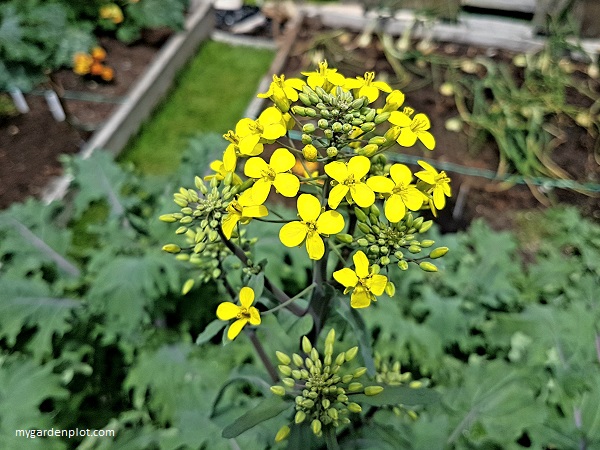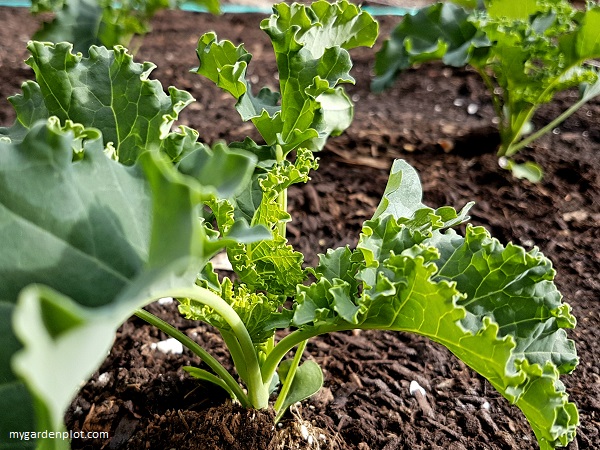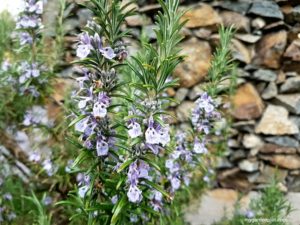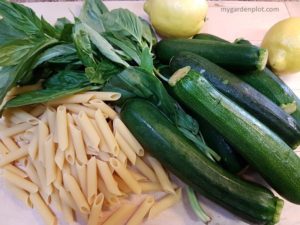Cool Season Vegetable: Brassica oleracea (Acephala group)
Kale is one of the easiest cool-season greens to grow. Nearly every gardener that starts growing their own veggies will include some kale. It is a very hardy vegetable that can survive most cold winter temperatures. The leaf yield is high and reliable, though this is subject to birds or rabbits not getting to it first. Generally, while more resistant to pests, it can be susceptible to aphids and summer caterpillars. The plants do survive even these pests. For early control measures, consider using a bug screen cover, which also helps against the hot sun in summer.
Kale is delicious. The leaves can be harvested for stir-fry dishes, steamed, added to soups and stews, or as historically cooked simply boiled. And in current trends added to smoothies or make kale chips. I really like the Red Russian kale. It is great looking in the veggie bed with the red vein running through the leaf. Plus, the young leaves can make tasty salads, and often can substitute arugula-based dishes.
Kale At A Glance
Type: Perennial
Location: Full sun to light shade during hot summer months
Season: Spring / Summer / Autumn (fall)
How to Grow Kale
Kale can be grown in full sun, but in partial shade, especially during the hot summer months is best. Kale needs moist, well-drained soil and regular watering during the growing phase. You can start with seeds indoors about one month before planting outside when daytime temperatures reach around 12 – 15°C. In zones 8 and 9, this can be around the end of April.
If you wish to start earlier, the garden store may have young kale ready for planting outdoors from early April. This certainly gives you a head start with possibly harvesting as soon early May in zones 8 and 9. Kale can continue one year to the next, but eventually, after a few years, it gets past its prime, and you will notice this in the flavour.
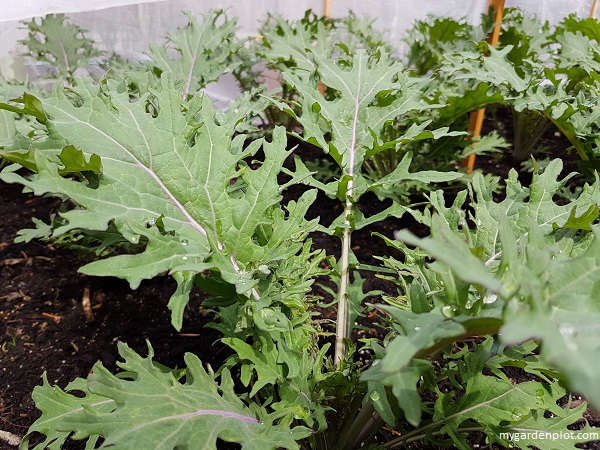
Harvesting Kale
During spring young kale leaves are perfect for salads, while full-grown leaves are best cooked. Most varieties can be harvested right through into winter. It is best to use scissors to cut the leaf. Pulling could uproot your kale. When harvesting, cut leaves from the bottom upwards. This allows the inner leaves to keep on growing. Kale can get ‘tired’ and pruning your plant when it starts to bolt will revive new growth and produce a harvest of delicious young leaves.
Interesting Tip
This cool-season vegetable improves with flavour after a frost in spring or fall time. To harvest, wait until these frozen leaves have thawed.
How To Prune Kale
Pruning back your established kale plant can be done at any time. After harvesting kale during spring, it is likely that in summer, a good prune is needed for a fresh start. For the most part I let my kale flower for collecting the flowers and sharing with bees and hummingbirds. But I then cut back to about 15-30 cm (6-12 inches) from the ground level. Clean up the area and add new compost or manure. I also add a fish fertilizer 5-1-1. The higher ratio of nitrogen encourages leaf growth.
In late winter, don’t hesitate to rejuvenate your kale plant by trimming off all the remaining leaves and cutting back to its strong stem about 30 cm (12 inches) from the ground level or less. New leaves will form in spring and give you another batch of tasty leaves.
Kale will yield a second or third year, but eventually, your kale may need to be replaced.
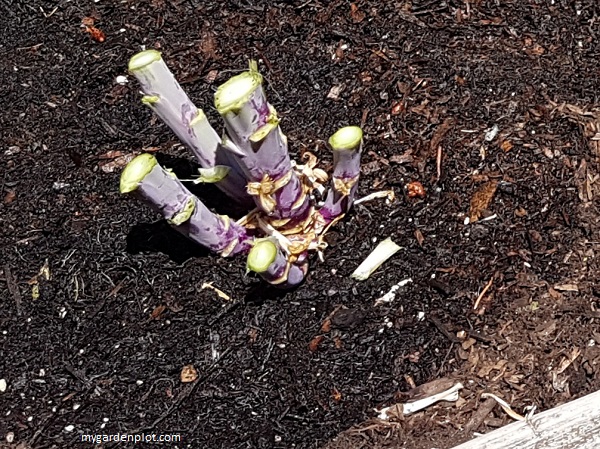
Kale Flowers
